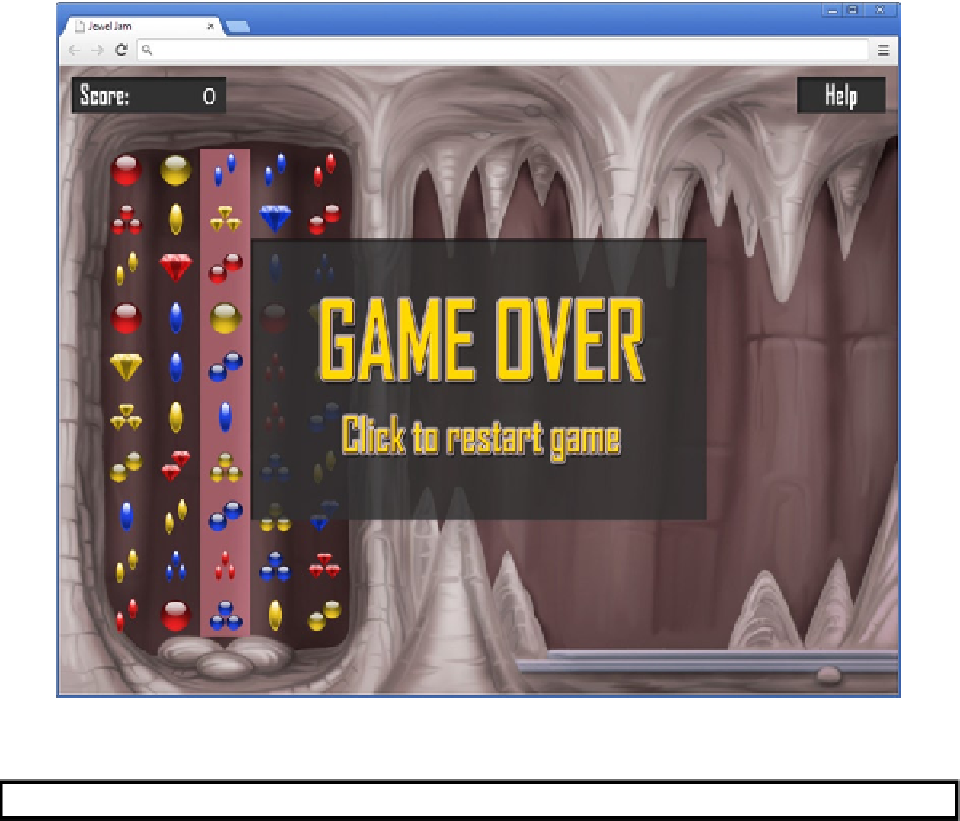Game Development Reference
In-Depth Information
Figure 16-3.
Too bad …
DESIGNING GAMES
Although on game-development teams the programmer normally isn't responsible for the design of the game, it's still
very useful to have a basic understanding of this process. The programmer must turn the game design into code and
must be able to advise the designer about what will work and what will be difficult to achieve. For this collaboration to be
successful, everyone has to speak the same language.
Designing a game primarily consists of defining the game mechanics, the setting of the game, and the game levels.
Game mechanics involve such things are the rules of the game, the way players control the game, goals and challenges,
and the reward structure. Psychology and educational science play an important role here. They help you to understand
how players get in the flow (the mood in which they're fully committed to playing the game); how goals, challenges, and
rewards can support each other; and how to vary and adapt the game's difficulty.
The game's setting deals with the story, the characters, and the virtual world in which the game takes place. A good story
can be a strong motivator for players, and discovering the story while playing can be a very satisfying task. Characters
need to evoke empathy from the player to give meaning to the tasks that must be performed. And the game world
enhances these aspects and adapts the game to certain demographics.


Search WWH ::

Custom Search